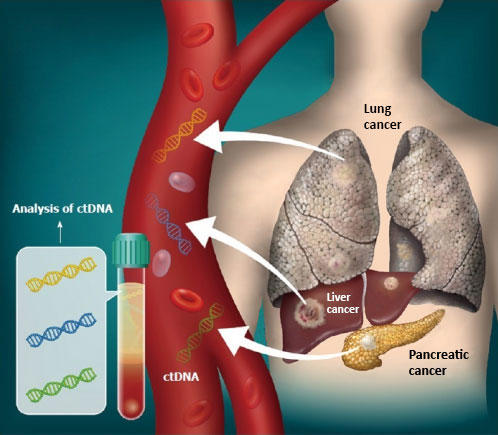
PHILADELPHIA— New research is advancing understanding of certain cancers and complex congenital disorders by illuminating how BRD4, a protein that scientists have studied for years, directs the spatial organization of DNA within the nucleus of the cell, a function critical for stem cell differentiation into muscle cells. Because how DNA folds is central to gene regulation, this study not only has implications that extend to a range of genetic conditions—including heart defects, cleft palate, microcephaly and intellectual disabilities—but will also better guide development of drug targets for BRD4, some of which are in clinical trials as promising therapeutic interventions to treat cancer and heart disease. The findings are published today in Nature Genetics.
"Inhibiting BRD4 and the class of proteins it belongs to has been seen as a very enticing area of cancer research. A similar strategy is being considered for heart disease patients," said senior author Rajan Jain, MD, assistant professor of Medicine and Cell & Developmental Biology at the Perelman School of Medicine at the University of Pennsylvania. "Our data highlight the importance of trying to use inhibitors which affect a specific function of BRD4. It's possible that negative results in clinical trials inhibiting BRD4 is because too many functions are being inhibited, so by understanding all the different functions we could be able to eventually have designer drugs which affect one versus another function of BRD4."
An attractive target, but a poorly understood one
BRD4 has been termed a cellular 'Swiss army knife' because of its ability to regulate multiple facets of how a gene is turned on, and normally acts as a positive regulator of processes that allow some genes to be switched on. BRD4 regulates genes including those involved in cell growth and division, and if those genes are switched on abnormally they can drive certain cancers, including several forms of leukemia. Given its pro-growth function, inhibition of BRD4 has seemed a promising strategy for fighting those cancers. However, results from some clinical studies of BRD4 inhibitors have suggested that inhibiting BRD4 could prove to be a complicated affair.
Jain's team showed that BRD4's function in genome-folding is distinct from its function in keeping genes switched on. However, in principle, drugs that bind to BRD4 in certain ways could inhibit either or both functions, which means that there is a need to consider medicine that targets one function or another of BRD4 and related proteins.
"The inhibitors that block BRD4 are potentially also disrupting the proper folding of DNA in some cells," Jain said. "So I think our work here reveals another layer of complexity to this protein, and should be relevant when researchers are trying to interpret their results with BRD4-affecting inhibitors."
Mutations in BRD4 also have been associated with cohesinopathies, a set of congenital syndromes, including Cornelia de Lange Syndrome and Roberts Syndrome, that often severely impair and shorten patients' lives. Cohesinopathies occur when there is a dysfunction of cohesin, a multi-protein molecular machine that helps fold and coil DNA within cells. How BRD4 is involved in the workings of cohesin has been largely unknown, until now. In this study, researchers discovered that loss of BRD4 in the neural crest, a subset of highly specialized cells that become tissue in the face, heart, brain and other organs, resulted in embryos that share features similar to those observed in human cohensinopathies.
Jain and his fellow researchers hypothesize that BRD4 tells new cells how to fold their DNA so that the correct genes for that cell type are turned on, and hope to prove or disprove that in upcoming research.
The research was supported by the National Institutes of Health (R01HL139783, F31 HL147416, T32 HL007843, T32 GM008216, R35GM128903, F30HD104360, T32GM008216, F31HD102084, and R35HL140018), the Burroughs Wellcome Foundation, the Allen Foundation, the American Heart Association, the National Science Foundation, and the Sarnoff Foundation.






